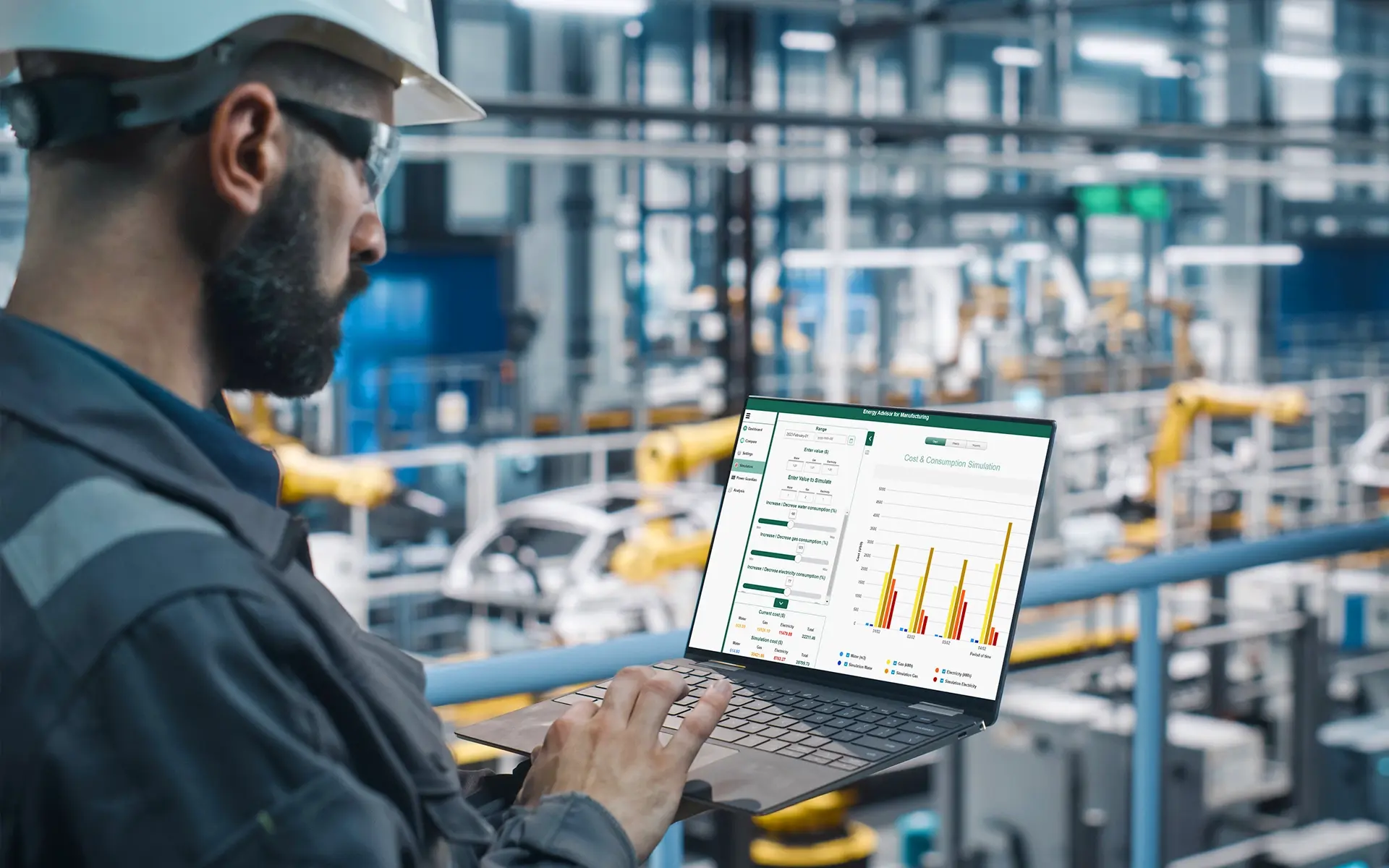Very often overlooked or accepted as-is due to being an integral part of the production – in times of crisis and cost-cutting, it can become a major factor that improves the bottom line of your organization. Where to look for significant energy savings to reduce energy costs? How manufacturers should focus on these goals to make an impact?
According to Eurostat, the industry sector is responsible for 26,1% of total energy usage in 2020. Yet, due to relatively low prices and high availability of energy, it was mostly ignored in cost considerations and innovation programs. With the current energy crisis generating pressure of increasing prices and uncertainty, the cost of energy and possibilities for its optimization became one of the main considerations of the top floor. If we take into account environmental aspects, the importance is only higher – we need to save energy in order to become more sustainable.
Without an overall strategy around energy management, it remains almost impossible to lead change in this area and drive global and unified initiatives. And only a dedicated energy team, with the buy-in of the whole organization, can prepare such a strategy, perform an energy audit and define an energy efficiency plan in order to put energy efficiency measures in place.


In the manufacturing world, everything starts with visibility. You cannot optimize what you do not measure. The visibility creates awareness and allows to build of knowledge and insights that are mandatory to make informed, data-driven decisions. Most of the manufacturers don’t measure energy usage and energy costs any deeper than on the overall, top level. But having good monitoring in place, a foundation for a central source of truth, allows you to fuel all other analyses and initiatives, also those mentioned below. Without this step, the success chance drops significantly.
Have a global, 360-view of your energy
But having simple data about current industrial energy consumption from power meters is insufficient. In today’s complex manufacturing operations, in order to be able to have a global perspective, you need to make sure that this data is correlated with other information, such as production planning, manufacturing facility, and other process data.
Only this kind of view, providing a holistic overview of various factors, can help in identifying the highest energy consumption areas in your manufacturing plant.
Our recommendation
The first step is always to have one source of truth that collects data from various sources, contextualizes it, and provides a way to formulate actionable insights. Based on our experiences in this area, we created Energy Advisor for Manufacturing – a first step in your journey to understand and reduce your industrial energy consumption, allowing you to align operational performance.
Product related profitability
With detailed information on the cost of energy consumption and a breakdown per work order or even product – you can calculate the energy costs per unit produced. This is another important, yet often overlooked aspect, which allows for profitability analysis. You are able to assess the cost of energy (and other media) in the products and find the ones with the lowest margins – or even the ones that generate losses. The impact on the product portfolio mix, marketing, and pricing strategy, even production planning can be huge!
Facility costs
Your facility’s operating costs can quickly become one of the elements affecting your bottom line. Without a good cost breakdown structure it’s nearly impossible to understand where the particular cost was generated.
One of the potential areas of improvement that are low-hanging fruits can be lighting, heating, and air conditioning system. Very often that is the first and easiest step – to replace traditional light fixtures with energy-efficient lighting. On the other hand, waste heat recovery systems (for example combined with dedusting) can potentially bring some benefits as well. Similarly to the air conditioning – check the air conditioning lines and verify their tightness to look for and reduce waste heat.
Our recommendation
Both product-related consumptions, as well as facility-generated ones, can increase your overall energy bill, especially during peak period rates. Watch out for these costs and if you took the advice from the first point to heart – you are on the right track to saving energy and reducing energy costs.

Leaks in the installation, uncontrolled overheating, energy waste, unused pressured air… Waste can manifest itself in different ways and on various parts of the production chain. If you have an appropriate monitoring solution in place, finding potential areas where waste occurs is easy. Having a holistic, 360-view of the shop floor operations, you can analyze if the peak in the energy demand is correlated with increased production, lower downtime, or – maybe is connected to a bigger problem with the equipment. It enables you to reduce wasted energy costs annually.
Anomaly detection in energy usage
An interesting opportunity is to correlate the data about energy usage with the state of the equipment and installations. Very often it can bring some valuable and actionable insights related to the condition of the machines which allows for avoiding unpredictable system failures. The use of Machine Learning allows for quick analysis of the stream of data from machines in real-time and notification of relevant teams, which can react faster and more effectively. Any waste can be identified and assessed for connection to the equipment state.
Our recommendation
Effectiveness optimization and waste reduction are two major directions to bring benefits from initiatives related to energy effectiveness. Analyze your data to find areas where waste occurs – in the form of waste heat, leaky installation, or inefficient machine or process.
Also, monitoring the installation itself in key areas can lead to increased visibility and through that – to decisive actions that address the problem of potential leakages. An interesting example here is the air compressors. It is estimated that even up to 20-30% of air compressors’ output can be lost due to leaks – it generates huge financial consequences.
Also, very often compressed air systems are the biggest energy consumers in the facility, so any identified cost reduction can generate a measurable impact!
Our recommendation
Provide and analyze both top-level measurements related to air compressors and usage on the consumers’ side – this would allow you to identify potential leakage. Calculate air compressor effectiveness and verify if your machines are efficient enough to keep them or if it is more beneficial to replace them with more performant ones.
Reducing costs and finding optimization possibilities is teamwork. Onboarding and securing the buy-in of various roles in the organization to your energy-efficiency initiatives may have a tremendous impact on the final result. Thanks to the one, central place where all information related to such initiatives can be found, as well as related target KPIs and current measurements – allows for the promotion of specific desired behaviors and information about the general direction of the company’s strategy. But in order to ensure effectiveness, both executive and energy teams need to work together to make sure that global, corporate sustainability strategy and local initiatives are in-line.
Our recommendation
You need to prepare a comprehensive energy strategy and start monitoring energy consumption if you want to find energy-saving improvements and therefore – significant cost savings as well. Remember, that you need to provide smart energy goals, which will motivate and empower your teams and workers.
There can be many reasons for focusing on energy savings. The need to increase competitiveness in a demanding market, the needs and requirements of compliance related to reporting, or the desire to have a positive impact on the environment. Regardless of which of these possibilities is the right one – a good approach to this matter and choosing the right initiatives, areas, and tools is crucial.













